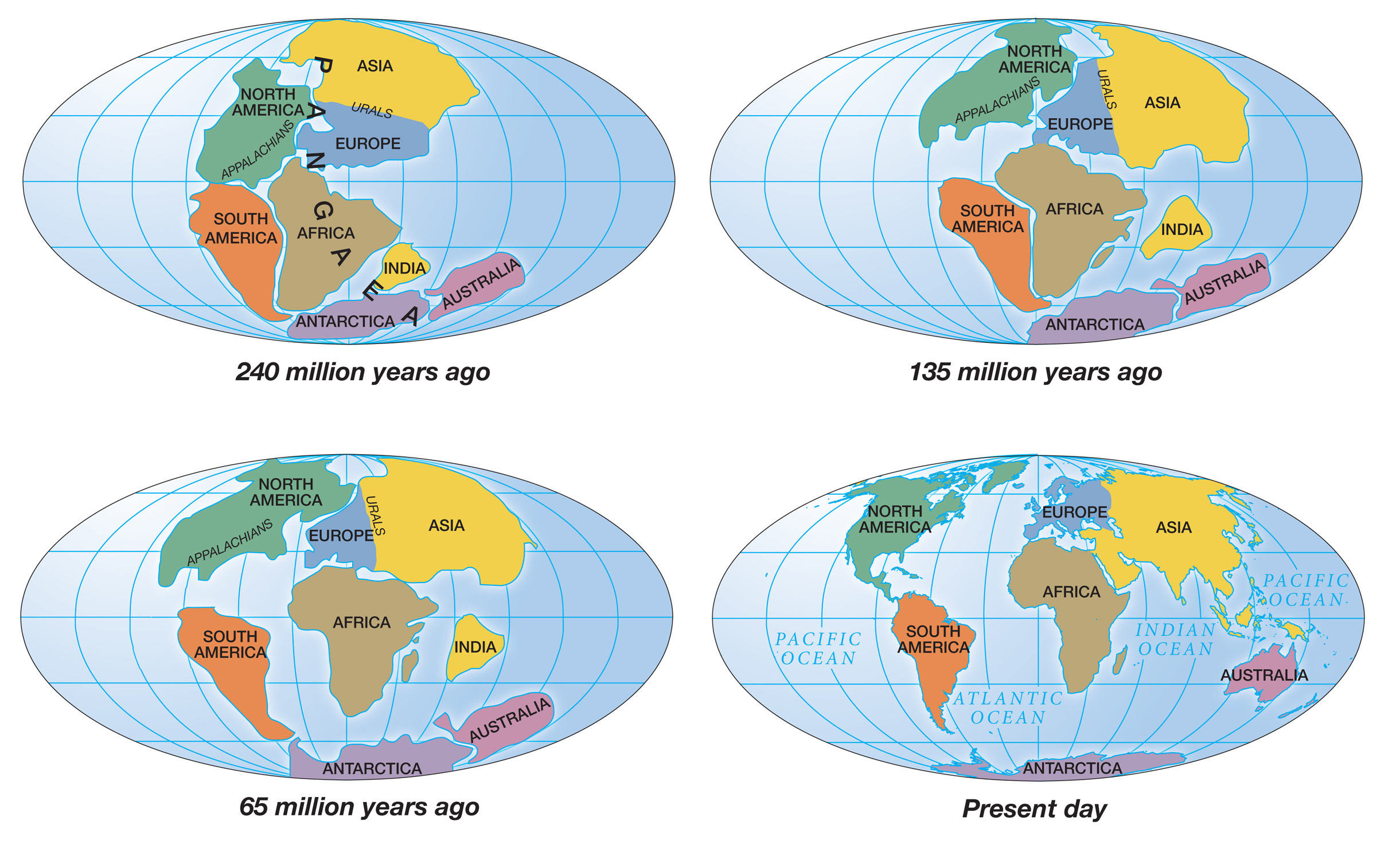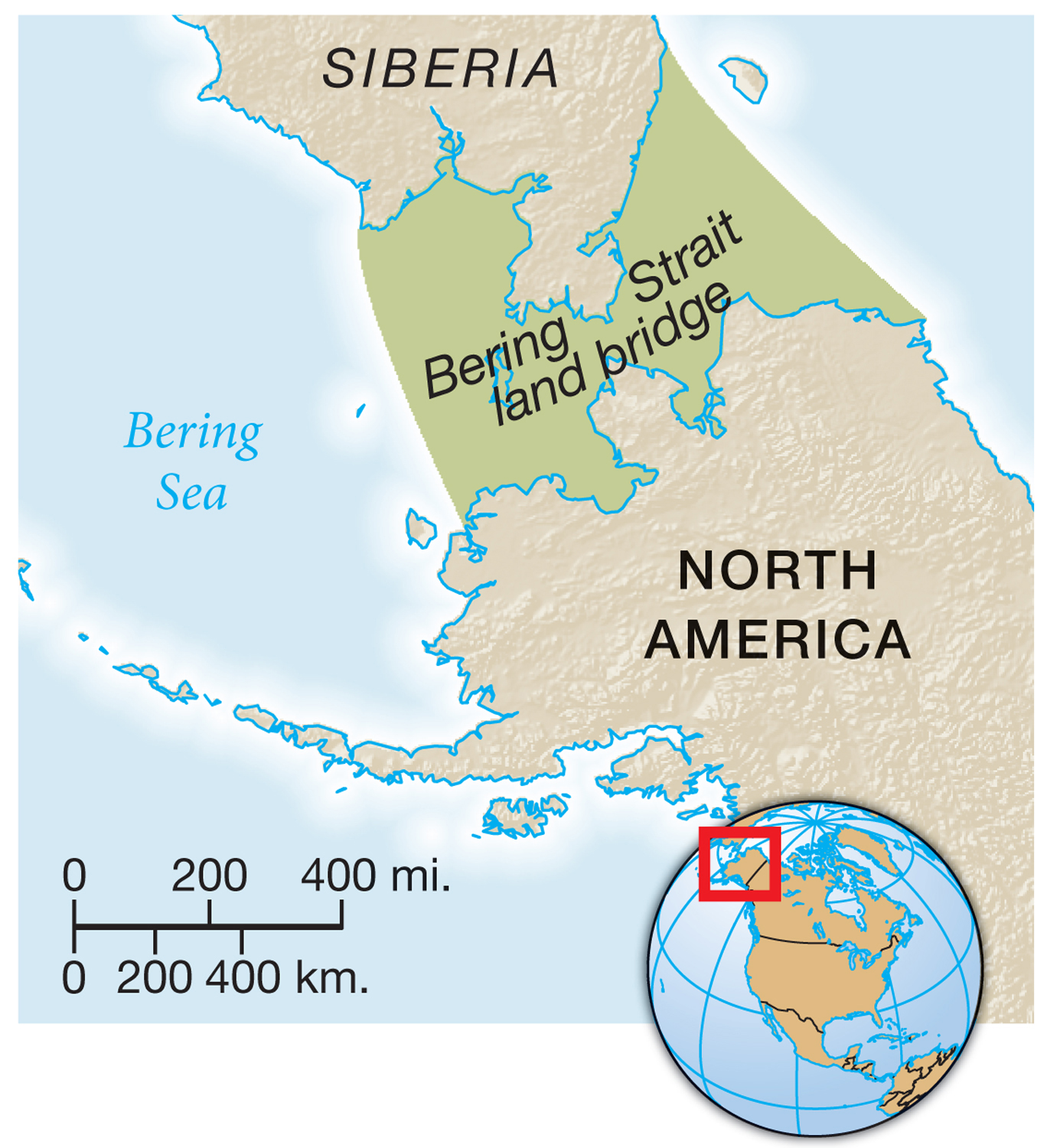The American Promise:
Printed Page 4
The American Promise Value
Edition: Printed Page 4
African and Asian Origins
Human beings lived elsewhere in the world for hundreds of thousands of years before they reached the Western Hemisphere. They lacked a way to travel to the Western Hemisphere because millions of years before humans existed anywhere on the globe, North and South America became detached from the gigantic common landmass scientists now call Pangaea. About 240 million years ago, powerful forces deep within the earth fractured Pangaea and slowly pushed continents apart to their present positions (Map 1.1). This process of continental drift encircled the land of the Western Hemisphere with large oceans that isolated it from the other continents long before early human beings (Homo erectus) first appeared in Africa about two million years ago.

More than 1.5 million years after Homo erectus appeared, or about 400,000 BP, modern humans (Homo sapiens) evolved in Africa. (The abbreviation BP—
Two major developments made it possible for ancient humans to migrate to the Western Hemisphere. First, people successfully adapted to the frigid environment near the Arctic Circle. Second, changes in the earth’s climate reconnected North America to Asia.

By about 25,000 BP, Homo sapiens had spread from Africa throughout Europe and Asia. People, probably women, had learned to use bone needles to sew animal skins into warm clothing that permitted them to become permanent residents of extremely cold regions such as northeastern Siberia. A few of these ancient Siberians clothed in animal hides walked to North America on land that now lies submerged beneath the sixty miles of water that currently separates easternmost Siberia from westernmost Alaska. A pathway across this watery chasm opened during the last global cold spell—
Siberian hunters roamed Beringia for centuries in search of mammoths, bison, and numerous smaller animals. As the hunters ventured farther east, they eventually became pioneers of human life in the Western Hemisphere. Although they did not know it, their migrations revolutionized the history of the world.
Archaeologists refer to these first migrants and their descendants for the next few millennia as Paleo-
When the first migrants came is hotly debated by experts. They probably arrived sometime after 15,000 BP. Scattered and inconclusive evidence suggests that they may have arrived several thousand years earlier. (See “Historical Question.”) Certainly, humans who came from Asia—